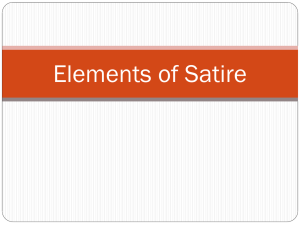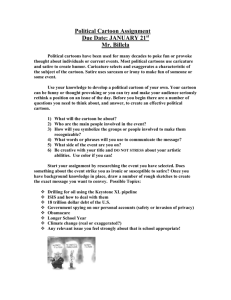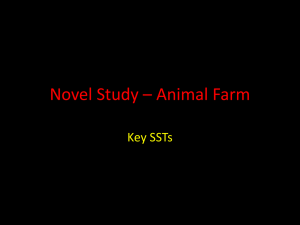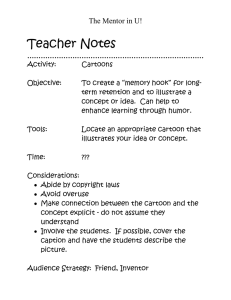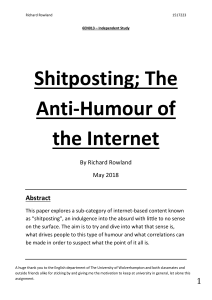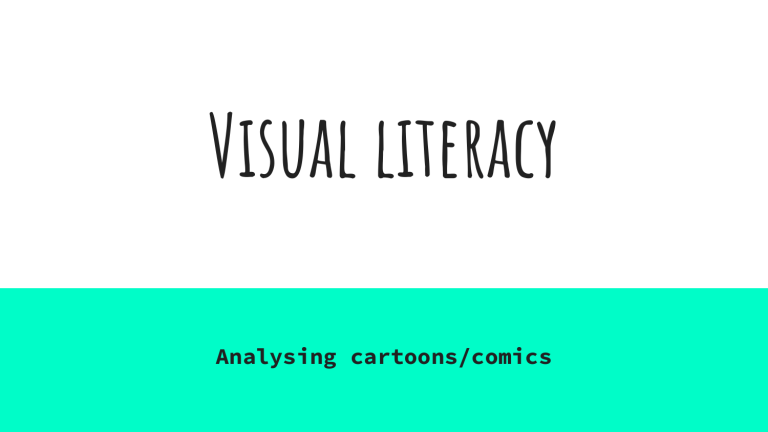
Visual literacy Analysing cartoons/comics Things to look for when analysing a cartoon: - Artistic elements Characters Speech/sounds Humour (duh) Artistic/stylistic elements Look at: - - - What’s included in the frame Colour: The artist may have used a specific colour to add meaning to the cartoon ANY TEXT OR CAPTIONS: Captions are often very important Symbols: Is there anything in the frame that symbolises something? size: Size may be used to place emphasis on something important in the cartoon. characters stereotypes Stereotype: a widely held, but fixed and oversimplified image or idea of a particular type of person or thing E.g. - All blondes are dumb. - All policemen love doughnuts. - All old people are grouchy. Ask yourself: does the character represent a stereotype? caricature Caricature: a picture or description of a person in which certain features are exaggerated for comic effect. Often used to make a commentary on people's characters. Used a lot in political and historical cartoons. Facial expressions and body language Used to show how characters are feeling... Speech and sounds Look for: - - - Figures of speech (you should know these!) Onomatopoeia Fonts (may tell you something about how the character is feeling Size and shape of text bubbles humour Irony Irony Something happens or is said that is the opposite of what is expected. sarcasm Sarcasm: using irony to be mocking or contemptuous. satire Satire: the use of humour to expose and ridicule people’s stupidity or vices, particularly in social and political commentaries. puns Pun: a joke based on the different possible meanings of a word, or using words which sound alike but have different meanings. E.g. - The butcher couldn’t reach the meat on the top shelf. The steaks were too high. - Santa’s elves are nothing more than subordinate clauses. allusion Allusion: a subtle or indirect reference to something, that the writer assumes the audience is familiar with.
